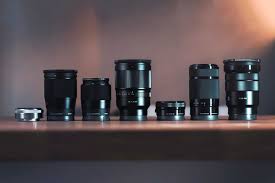Cameras commonly include different lens lengths such as 3mm, 6mm, 2.8 – 9mm, and 5 – 50mm. But what do these specifications really mean? Having an understanding of these metrics is essential when assessing the coverage and field of view of a camera.
The Importance of Lens Length
Essentially, the focal lens length measures how far the lens is from the sensor. Surveillance relies on it because it’s the primary factor determining a scene’s field of view and angle of view. As the lens length increases, the field of view becomes narrower. Likewise, as the lens length decreases, the field of view becomes wider.
Lenses with a longer focal length distance themselves from the imager, resulting in narrower fields of view. Similarly, a short lens will also capture a greater area since it is closer to the imager. Depending on the distance between the sensor and the lens, this principle applies.
The Effects of Imager Size
Field of view in surveillance is primarily determined by focal lens length. However, the imager size (1/4″,1/3″,1/2″) also plays an important role. At the same focal length, a larger imager will have a wider angle of view. Despite appearing to be very close in size, imager size matters greatly. As a result, the differences between sensor size can affect the angle of view by several degrees. This results in wider or narrower fields of view than expected.
This may be a matter of a few feet or more at long distances. Whereas the difference may not be that significant at close ranges. When focal lengths are short, differences between the imager and the camera are most obvious. This can result in lower details than expected.
Typical Lens Length Used
There are four common lens length ranges for surveillance cameras:
- Fisheye is Under 2mm: Offers a super wide angle of view, but distorts the image somewhat.
- ‘Normal’ is 3mm – 10mm: Most camera stock lenses fall in this category (roughly 30 to 80 degrees FoV).
- Telephoto is 10mm – 80mm: These lenses are not included in most cameras, however third-party lenses can be purchased.
- Super Telephoto is 100mm+: This range of lenses are designed to shoot very distant objects.
Varifocal Lenses Vs. Fixed Focal
Two most common lens types:
- Varifocal: This type of lens can be adjusted either manually by turning two rings or automatically by using a motor. As a result, varifocal models are more flexible, but they are also larger and more expensive due to their ability to adapt to the field of view exactly.
- Fixed focal: The main advantages of these lenses are their simplicity and size, though they are less flexible than varifocal lenses but they are less flexible and cannot be adjusted to meet specific field of view requirements.
Camera housings can be smaller when using fixed focal length lenses compared with manual varifocal or motorized lenses.
Limitations To Lens Length
- Distorted image quality
- Inferior low light performance
- Problems with depth of field
As the lens length shortens, the camera can capture more. There is a drawback to wide capture areas: the more areas covered by the camera, the less detailed each individual object will be.
Generally, the field of view should be no wider than the area of interest. However, this is not always easy since most individuals want to capture more than one thing at a time.
If you are looking to update security features into your business, like Lens Length let RC Security help. Our continued research and partnerships with premium brands allow us to offer better quality every time.


